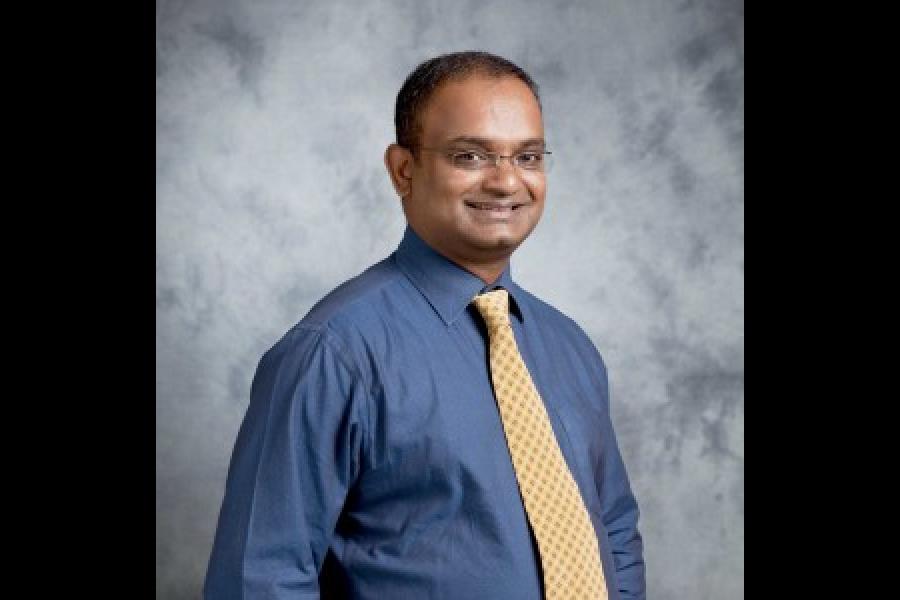So What is the New Normal for GE in India?
GE's India Technology Centre to offer key lessons in design and value-for-customer to its various global businesses
In the last three years the world seems to have been setting a new normal for itself almost every year. Experts believe it’ll continue for a few more years. Businesses are restructuring and refocusing, mutating as it were, in response to the brutal economic environment. GE, which took a bold call to build its largest multi-disciplinary technology centre outside the US in Bangalore in 2000, is preparing for its new normal.
Among other things, what that means is super sharp focus on cost and environment right from the start. In its 12th year, India Technology Centre (also called JFWTC) got its third managing director Gopichand Katragadda who believes products should be engineered and designed to cost right upfront, not inserted as an afterthought. In the last two years, 30 products from the centre have been contributing 10 percent to GE’s revenue from India. By 2015, Katragadda wants the product portfolio to grow to 60 with 20 percent of its 6000 people working on products for the India market. That’s a substantial change in outlook as most MNCs use their India R&D centres to support their global businesses.
For the shift to happen, the decision making needs to move here too. That’s a call that many multinationals fear to take. (You only need to dig into large technology companies to see how much of new product development happens in India.).
Two chief engineer roles have now been added here in aviation and energy. To put that in perspective, there are about 15 and 20 such positions globally in the two respective areas. Katragadda says this is important so that they are able to make a call locally and quickly. He believes the centre has not been able to leverage “co-location” – connect manufacturing with engineering and design — as much as it should have and that is being corrected. It’d happen imminently at Pune where GE is investing $200 in a new, multi-modal manufacturing facility. Currently it makes wind turbines, but by the third quarter of this year, other products, such as gas engines and sensors, will start rolling out from Pune.
The India centre where GE has already invested $200 million, with additional $60 m investment in process, is certainly assuming a bigger role in GE’s scheme of things. But what I found interesting was the fact that the new leadership is warming up to being part of the national innovation agenda. That’s a change from the past as in my earlier interactions with the two MDs (with Guillermo Wille and Sanjay M Correa) I didn't get that sense.
“We want this centre to be not only a GE asset but a national asset,” says Katragadda.
What does that mean? We’ll get you an update a few months down the road. Katragadda says he is working with various government and industry bodies in the innovation space to effect long-term change.
At the ‘meet and greet’ session yesterday, Katragadda also mentioned something very significant: the India centre is leading one of the four GE Corporate sponsored efforts, codenamed LiteSpeed, to develop and teach GE businesses new design processes to deliver products faster into the market and with the right customer value.
Under this, the GE team will leverage its own experience from delivering products for India in Energy and Healthcare, and also learn from other Indian companies who have excelled in new product introduction, he says.
If a company that gave the world the useful concept of “reverse innovation” [the term I used earlier was "engineering". The error was pointed out by a reader below.] is able to institutionalize cross-centre learnings, businesses would it find far easier to adjust to the new normal. Analysts believe it hasn't been easy for Indra Nooyi of PepsiCo to transpose learnings from emerging markets to centres in the developed markets. Katragadda says the India P&L (profit and loss) structure and the GE Global Growth Organization are “designed to provide visibility and share lessons across global teams.” This has been working well for GE due to a “strong leadership mandate to learn from emerging markets”.
Personally, I am keen on seeing GE’s advanced solutions in robotic surgery hit the market in India at a price that average Indians can afford. Areas such as diagnostic imaging where, owing to advances imaging techniques and slicing/dicing of data, surgeries are performed on images and the coordinates then translated on robots or machines to be executed remotely. Imagine, a surgeon sitting in Boston operating on you in Bangalore, or even vice-versa!
PS: Meet & Greet is a GE innovation in India, I must say. I think it’d be very effective if they do it at regular intervals and pick up the threads from the previous meetings to show how far they’ve come from there. Earlier this year GE Healthcare’s new CEO in India Terri Bresenham held such a meet, where she said in the next three years 25 percent of the company’s revenue will come from products designed and developed here, up from 12 percent now.
The thoughts and opinions shared here are of the author.
Check out our end of season subscription discounts with a Moneycontrol pro subscription absolutely free. Use code EOSO2021. Click here for details.

